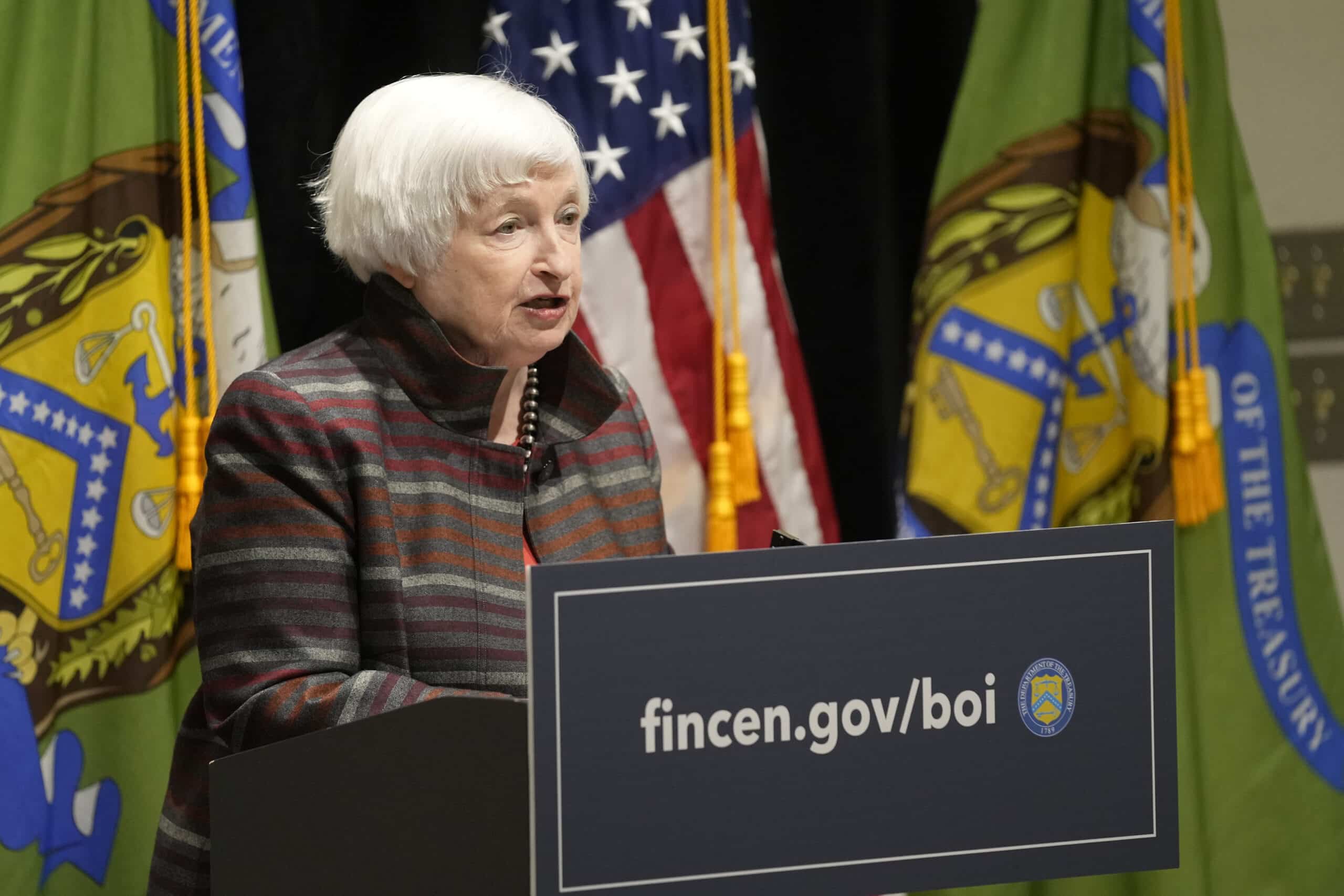
FILE – U.S. Treasury Secretary Janet Yellen speaks during a visit to the Financial Crimes Enforcement Network (FinCEN) in Vienna, Va., on Jan. 8, 2024. (AP Photo/Susan Walsh, File)
Washington, United States — The United States could come up against its debt ceiling as soon as in mid-January, Treasury Secretary Janet Yellen said Friday, urging Congress to “act to protect the full faith and credit” of the country.
Lawmakers have suspended the debt ceiling — a limit on government borrowing to pay for bills already incurred — until January 1 next year.
This means that on January 2, a new limit will be set matching the amount of debt issued by the Treasury Department.
But the path forward could prove to be contentious if the United States hits this new limit, given that the lifting of the ceiling has been a thorny partisan issue in recent years.
READ: Yellen to warn China of industrial oversupply risks
“Treasury currently expects to reach the new limit between January 14 and January 23, at which time it will be necessary for Treasury to start taking extraordinary measures,” said Yellen in a letter addressed to Republican House Speaker Mike Johnson and other lawmakers.
Such extraordinary measures allow the Treasury Department to continue financing the government’s activities, preventing it from defaulting on its obligations.
The United States is not set to hit the debt limit once the suspension is over, as the country’s outstanding debt is projected to decrease by around $54 billion on January 2, Yellen noted.
This is “mostly due to a scheduled redemption of nonmarketable securities held by a federal trust fund associated with Medicare payments,” she added.
Congress has raised the limit more than 100 times to allow the government to meet its spending commitments.
But conservatives are generally against increasing the country’s massive borrowing — currently standing at $36.2 trillion — and multiple Republicans have never voted for a hike.
If the debt ceiling is not raised or suspended before the Treasury’s tools are exhausted, the government risks defaulting on payment obligations — with profound implications for the world’s biggest economy.